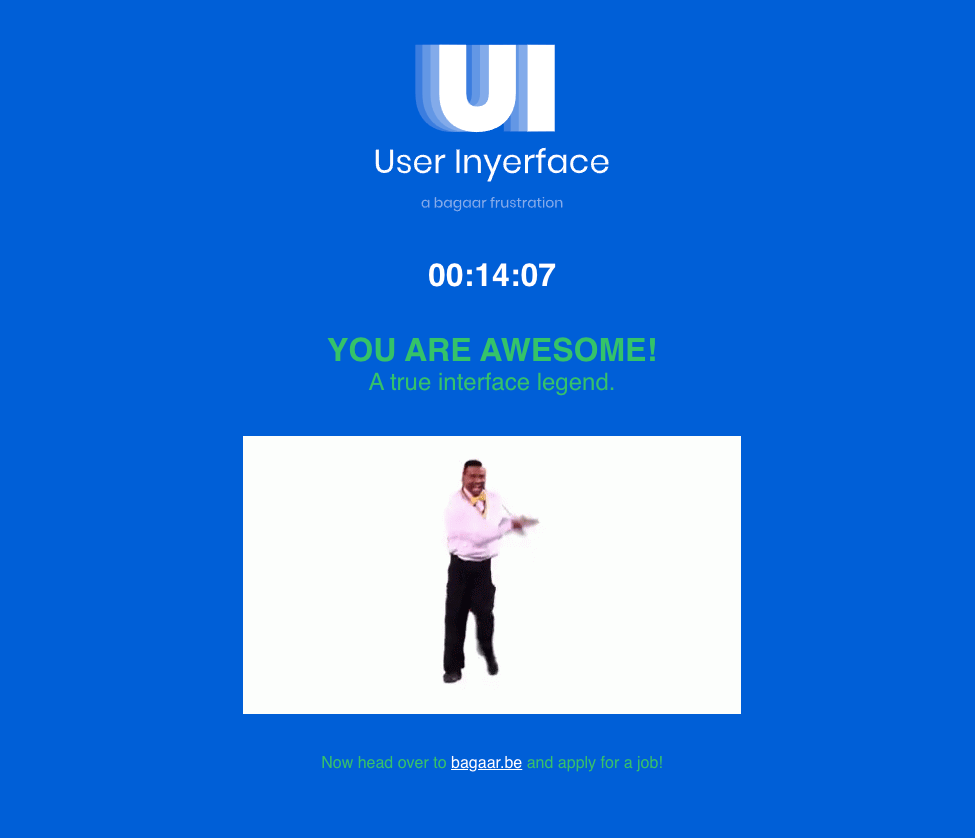
Exploring the GUI was a fantastic experience to see more clearly the ‘dark patterns’ designers employ to lead the manipulate our behavior in digital environments. From the moment I opened the GUI I noticed I was in a very deceiving environment which purpose was to maximize the time I spent on the platform and the number of clicks. This made me think about Harris’ (2017) TED Talk about the persuasive techniques that tech companies use to control our minds. In effect, Harris (2017) mentioned that “the best way to get people’s attention is to know how someone’s mind works”, an inference we could make about those who designed this GUI. For example, we often feel stress by time pressure, a condition that was created with the GIU’s timer. Looking at it more deeply, the timer is instigating a sense of losing something (bringing up thoughts like “I’m running out of it!”) which created a condition of fear. Under such conditions we can lose concentration and clarity, which makes our behavior more erratic, meaning more susceptible to clicking the wrong buttons – which are the buttons they really want us to click. Fear could also lead to a paralyzed state in which the time we spend on the environment is maximized.
Another dark pattern I was able to quickly recognize based on my experience as a web and graphic designer was the intentional misuse of color to deviate our attention from the steps to complete the game. Often, the colors used in words that allowed progression in the DIU were similar to the background color. Similarly, the words were often small, not underlined, and positioned away from the DIU’s focal points. In this case, rather than an understanding of how our mind works, I would argue that some dark patterns are built on an understanding of how our sensory perception works to manipulate attention. I worked in the advertising industry for a couple of years, doing audio and multimedia productions for marketing campaigns. In the same way advertisers understand how visual perception works and this enables them to create visual objects (commercials, short videos for social media, posters, flyers, etc) that manipulate behaviour, they also create auditory objects for the same purposes. Something that often surprised me while producing the audio for commercials was how announcers and voiceovers were always directed to express in overenthusiastic ways. Many times, while recording, directors and clients would say “go higher”, “raise it”, or “do it with a bigger smile” to a point in which, in my view, sounded unrealistic (seriously, how excited can you be about buying a Pepsi?). I think that when a dark pattern is taken to unrealistic dimensions its deceiving intentions are more clearly exposed.
The concern I am left with is about the subtle dimensions of deception, which are much more difficult to scan. The GUI’s tricks and intentions were very easy to identify, but I am sure in other digital environments billions of people use daily (Facebook, Instagram, Google, etc) deception is way subtler. This would be like being approached by a thief whose whole body language and appearance clearly reveal his identity, and being approached by another thief who is disguised as an unharmful friend. For this reason, I think it is essential that we are educated about media deception and develop the necessary literacy skills that allow us to see through the lies. As mentioned by Tufekci (2017) the persuasion architecture of digital environments is much more sophisticated and potentially dangerous. It is important to understand also that this is not just a matter of selling products or manipulating behavior, but it also has the capacity to manipulate belief systems which are the foundation of an individual’s behavior.
References
Harris, T. (2017). How a handful of tech companies control billions of minds every day. Retrieved from https://www.ted.com/talks/tristan_harris_the_manipulative_tricks_tech_companies_use_to_capture_your_attention?language=en
Tufekci, Z. (2017). We’re building a dystopia just to make people click on ads. https://www.ted.com/talks/zeynep_tufekci_we_re_building_a_dystopia_just_to_make_people_click_on_ads?language=en
Thank you for your connection to sensory perception and how it is a part of a manipulating the audience’s attention. I had not considered that aspect and now that I do, it is very obvious. In your reflection, where you further address the concern of subtle deception, I realized that the coloring and sensory perception on this website alerted me immediately to question the intent of the website. That combined with my realization after a few clicks made it clear to me that the game was intentionally designed to make a point by taking us for a ride. I share your concern for the more subtle dimensions of deception, and furthermore the lack of understanding on the part of educators. We need to be guiding our youth to develop healthy online habits with an understanding of the innerworkings of technology, it is not ok to simply let them “figure it out”. Way too often I encounters educators whose attitude is that youth these days are naturals as “digital natives” but they do not naturally come by the understanding of their interactions online. This must be explicitly taught. Really, youth these days can navigate themselves in and out of anything on any device but have little understanding for the potentially long term impact their actions online may have on them.